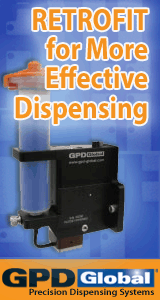Surface Treatment Enabling Low Temperature Soldering to Aluminum
Published: |
July 29, 2020 |
Author: |
Divyakant Kadiwala |
Abstract: |
The majority of flexible circuits are made by patterning copper metal that is laminated to a flexible substrate, which is usually polyimide film of varying thickness. An increasingly popular method to meet the need for lower cost circuitry is the use of aluminum on Polyester (Al-PET) substrates. This material is gaining popularity and has found wide use in RFID tags, low cost LED lighting and other single-layer circuits. However, both aluminum and PET have their own constraints and require special processing to make finished circuits. Aluminum is not easy to solder components to at low temperatures and PET cannot withstand high temperatures. Soldering to these materials requires either an additional surface treatment or the use of conductive epoxy to attach components. Surface treatment of aluminum includes the likes of Electroless Nickel Immersion Gold plating (ENIG), which is extensive wet-chemistry and cost-prohibitive for mass adoption. Conductive adhesives, including Anisotropic Conductive Paste (ACP), are another alternate to soldering components. These result in component substrate interfaces that are inferior to conventional solders in terms of performance and reliability. An advanced surface treatment technology will be presented that addresses all these constraints. Once applied on Aluminum surfaces using conventional printing techniques such as screen, stencil, etc., it is cured thermally in a convection oven at low temperatures. This surface treatment is non-conductive. To attach a component, a solder bump on the component or solder printed on the treated pad is needed before placing the component. The Aluminum circuit will pass through a reflow oven, as is commonly done in PCB manufacturing. This allows for the formation of a true metal to metal bond between the solder and the aluminum on the pads. This process paves the way for large scale, low cost manufacturing of Al-PET circuits. We will also discuss details of the process used to make functional aluminum circuits, study the resultant solder-aluminum bond, shear results and SEM/ EDS analysis.... |
|
|
|
Company Information:
More articles from Averatek Corporation »
- Sep 02, 2020 - Semi-Additive Process (SAP) Utilizing Very Uniform Ultrathin Copper by A Novel Catalyst
- See all SMT / PCB technical articles from Averatek Corporation »
More SMT / PCB assembly technical articles »
- Apr 11, 2022 - iNEMI Webinar 07.07.2021 - PCB Cleaning | ZESTRON Americas

- Jan 28, 2022 - Open Radio Unit White Box 5G | Whizz Systems

- Nov 10, 2021 - Understanding the Cleaning Process for Automatic Stencil Printers | ITW EAE

- Oct 20, 2021 - PCB Surface Finishes & The Cleaning Process - A Compatibility Study | ZESTRON Americas

- Oct 06, 2021 - Cleaning Before Conformal Coating | ZESTRON Americas

- Browse Technical Library »
Surface Treatment Enabling Low Temperature Soldering to Aluminum article has been viewed 354 times







